|
THE EARLY RAILWAYS OF TOTTENHAM |
|
|
THE EARLY RAILWAYS OF TOTTENHAM |
|
| The technology of rail transport in the UK has advanced
considerably over the past 180 years and today there are high-speed trains that can
transport you to most Cities and Towns in the UK in a matter of hours. We take most of the
trains today for granted and barely give them a glance as we often see them speed past us
when walking or driving. However, whenever we see or hear an old steam train, we stop in
our tracks and are captivated by their presence. After all these old trains have a magic
of their own and almost come to life and display characteristics of their own. We love to
hear them and to be enveloped in the steam and smells that evoke memories of the past.
|
|
|
|
| This old reference book was published back in 1945 and provides a wonderful insight into the history of the railways in Tottenham. For the real railway enthusiasts, it contains a plethora of old photographs, diagrams and descriptions of signalling and even contains descriptions of damage inflicted on the local railway network during WW2.
|
|
 |
HISTORY OF OUR LOCAL RAILWAYS Tottenham has developed from a small hamlet of a few scattered houses situated between the High Cross and the Hale at the time of the railway’s coming in 1840. The phenomenal growth that took place from the mid 19th century has transformed it into the densely populated London suburb that it is today and this is due almost entirely to the introduction of the Railways. The main railway line through Tottenham is one of the oldest in the country. The Northern and Eastern Railway produced a scheme in 1839 to install a trunk railway from Islington in North London to York, by way of Ware and Cambridge, Peterborough and Lincoln. In 1836 Royal assent was given to their bill and Robert Stephenson, son of George Stephenson, was appointed engineer. The Company found, however that their powers were limited to a railway just 53 miles in length, from London to Cambridge. The original plan had to be curtailed still further and the company applied for additional Acts in 1939 and 1840 to abandon plans for a line north of Bishop’s Stortford and for a deviation at the London end. |
||
|
|
Hopes for a cheap and easy means to access to the City were
dashed when their application to run lines into Shoreditch were met with a blank refusal. So although Tottenham and Edmonton had the distinction of having railway facilities only ten years after the opening of the Liverpool and Manchester Railway in 1830, they were only useful for journeys up and down the Lea Valley. |
|
|
The main village of Tottenham was served by two stations in
1840, one at the Hale in Ferry Lane called Tottenham and the other in 'Marsh lane'. Forty
pens for cattle were placed alongside the line at the Hale, each pen holding 30 sheep or
cattle for the animal traffic, which was very heavy.
|
|
|
Queen Victoria and Prince Albert paid a visit to Tottenham in
1847 to start a railway journey to Cambridge. The occasion was a visit to the University
where His Royal Highness was due to be installed as Prince Chancellor. The Royal party
drove from Buckingham Palace to Tottenham station where the directors and officers of the
railway company were there to receive them.
The station had
been altered to provide a reception room and a canopy was erected at the entrance. The
Royal party boarded the train at 11.20 am and arrived at Cambridge at 1.10 pm. The Queen
had chosen to begin her journey at Tottenham because the carriage drive was more
attractive than the rail journey through east London. There was also a very large space in
front of the station which was more suitable for the reception of the Royal party and the
large crowd that had gathered to see them. |
|
|
||
|
The Tottenham and Hampstead Junction
Railway, authorised in 1862, opened in 1868. It was linked to the G.E.R. line by North
Junction, and later also by South and West junctions, south of Tottenham station, and
crossed the south of the parish towards Crouch Hill. Although destined to be an important
link between the systems of the L.N.E.R. and the L.M.S.R., the line at first served no
stations within Tottenham itself. South Tottenham station, at the foot of Stamford Hill,
was opened in 1871, Harringay Park (later Harringay Stadium) in 1880, and St. Ann's Road,
between the two, in 1882. The line was taken over by the Tottenham and Hampstead Joint
Committee, representing the Midland and the Great Eastern companies, in 1902.
|
||
 |
A direct rail link between east and west was achieved only in 1878, when the G.E.R. opened a line from South Tottenham to Palace Gates, a little north-west of Wood Green station. Intermediate stations, also opened in 1878, were at West Green and at Green Lanes (renamed Green Lanes and Noel Park in 1884, Noel Park and Wood Green in 1902). Palace Gates was linked to Bowes Park, on the Enfield line, in 1930.
Pictured right is an extract from the world famous ‘Bradshaws’ Guide which was recently featured on a BBC Television programme presented by Michael Portillo. Note the population of TOTTENHAM was given at just 13,240 people. |
|
|
FOLLOWING ONCE FAMILIAR TRACKS The following section contains some old photographs and information on Railway Stations in Tottenham. Some no longer exist following the notorious cuts to British Railway services by Dr Richard Beeching in the early 1960s
|
|
- First opened: 22nd July 1872 - Palace Gates Line closed in 1963 - Entrance moved from West Green Road to Seven Sisters Road on opening of Victoria Line |
||
 |
|
|
|
 |
 |
 |
|
 |
 |
||
 |
 |
 |
|
| We acknowledge the permission given by Nick Catford to publish his photograph of the Seven Sisters- Palace Gates Line in 1967 | |||
|
- First Opened 22nd July 1872 | ||
|
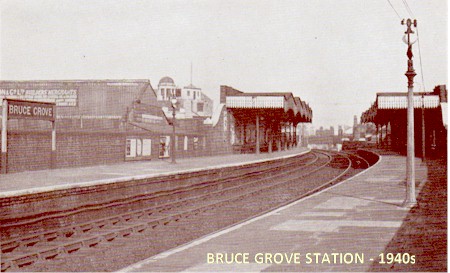 |
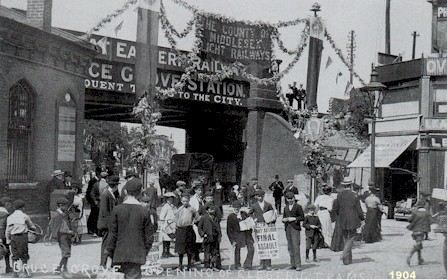 |
|
-First Opened 22nd July 1872 | ||
|
 |
 |
|
- First opened 2nd Oct 1882 - Closed 9th Aug 1942 |
||
|
|
|
|
- First Opened 1st May 1871 | ||
|
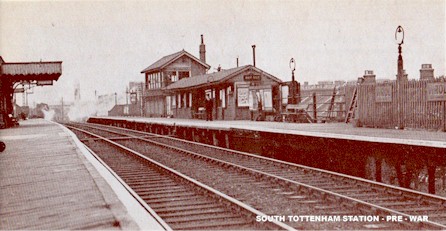 |
 |
|
|
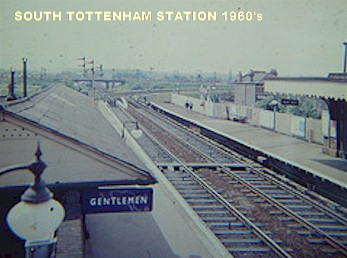 |
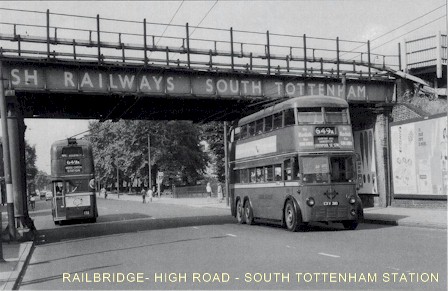 |
|
- First Opened 1st Jan 1878 - Closed 7th Jan 1963 |
||
|
 |
 |
|
|
 |
 |
|
Note; West Green Railway Ticket - Copyright Michael Stewart |
|||
 |
- First Opened 1st January 1878 - Formerly named Green Lanes –Wood Green - Closed 7th Jan 1963 |
||
|
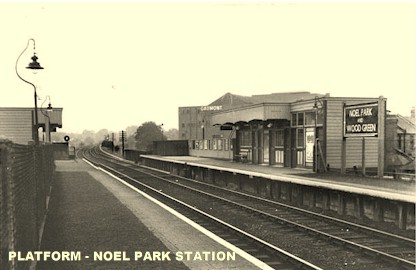 |
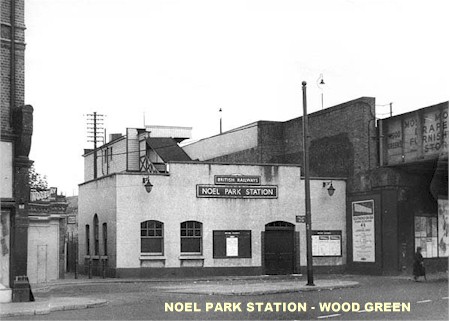 |
 |
- First Opened 7th Oct 1878 - Closed 7th Jan 1963 |
||
 |
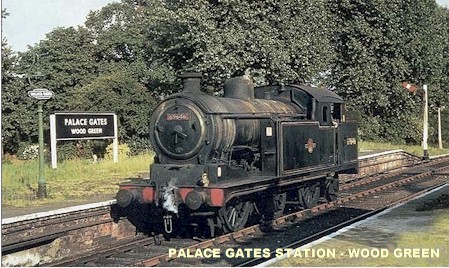 |
 |
|
 |
 |
|
 |
- First Opened 15th Sep 1840 - Formerly named as ‘Marsh Lane’ |
||
|
 |
||
|
 |
|
|
 |
-
First Opened 15th Sep 1940 - Name changed to ‘Tottenham Hale’ following opening of Victoria Line underground station |
||
 |
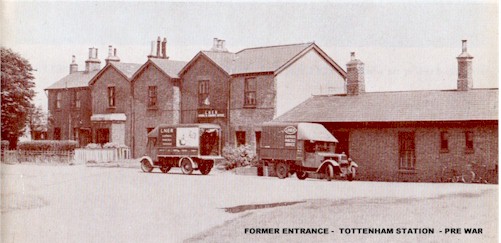 |
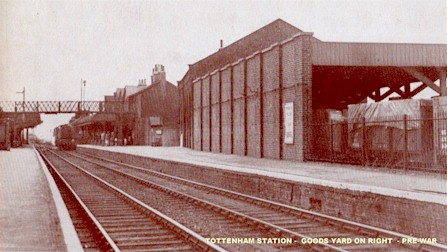 |
|
|
|
 ORIGINAL PHOTOGRAPH OF STATION PLATFORM SIGN BY RICHARD HADINGHAM |
||
 |
 |
 |
|
 |
 |
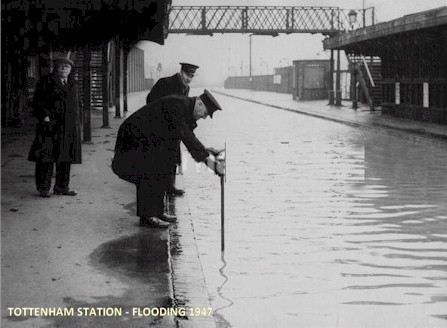 |
MISCELLANEOUS PHOTOGRAPHS |
|||
 |
 |
||
 |
 |
 |
|
 |
|
 |
|
| We trust
you have enjoyed your short trip around the early railways of Tottenham !
|
REFERENCES: We acknowledge the information provided by 'Railways of Tottenham ' by G. H Lake 1945 and 'Britain On-Line' website
Article prepared by : Alan Swain December 2011